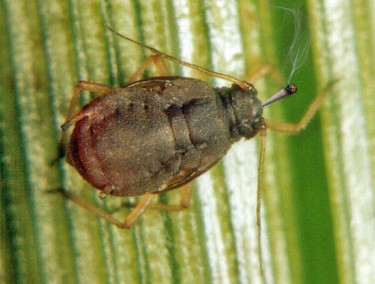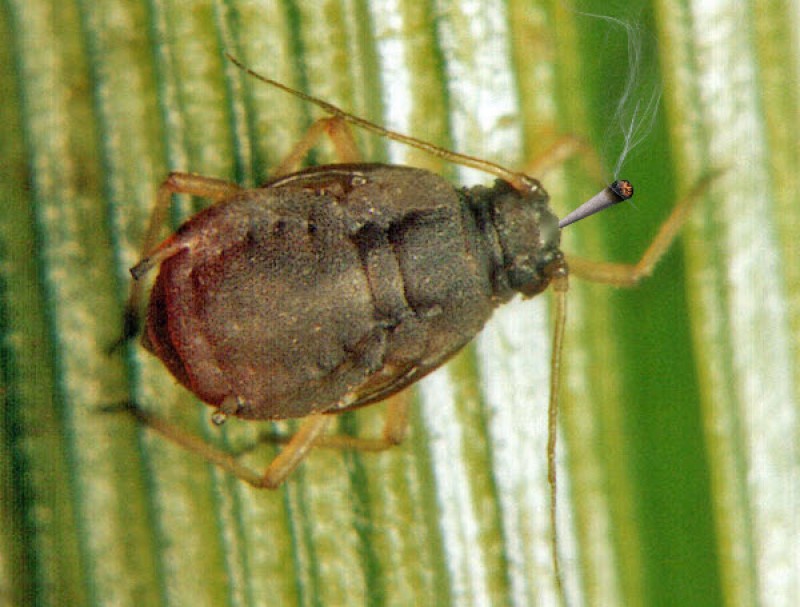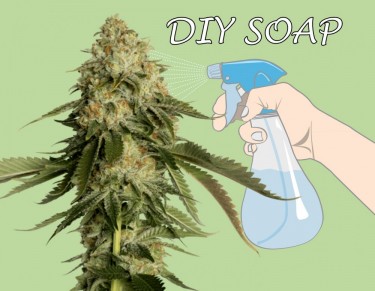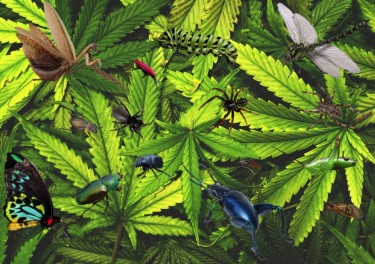
Pests are an inevitable part of any agricultural endeavor, and as the cannabis industry expands, new agricultural pests emerge. In the cannabis industry, battles with thrips, spider mites, and even the cannabis aphis are all too familiar. A pest known to infest outdoor grass crops, the Rhopalosiphum rufiabdominale, or rice root aphid, has recently been discovered on indoor Cannabis sativa crops.
Cannabis production and pests
Several insects and mites have emerged as significant potential pests in the production of Cannabis sativa crops in the United States in the relatively short time since some state-legalized production began.
Many of these are generalist species, such as two-spotted spider mite (Tetranychus urticae), broad mite (Polyphagotarsonemus latus), and onion thrips, which are all associated with indoor crop production (Thrips tabaci). Others, such as the cannabis aphid (Phorodon cannabis) and the hemp russet mite, are crop specialists (Aculops cannibicola). The presence of the rice root aphid (Rhopalosiphum rufiabdominale) as a common insect found on this crop throughout North America is perhaps the most surprising of all.
These pests, when left undetected, result in economic issues as they reduce the quality and quantity of the available cannabis to be harvested. Many indoor grow of cannabis are established on commercial scales; hence all farms must be protected against disease pathogens and harmful pests, as these agents could wipe off the entire crop.
The Rice Root Aphid (Rhopalosiphum rufiabdominale)
In North America, the rice root aphid (Rhopalosiphum rufiabdominalis) is a well-known pest that lives outside all year. It can affect both soil-grown and hydroponic plants. Because this pest spends the majority of its life underground, unlike other aphids, it can be challenging to spot an infestation. Indoors, these insects can breed all year. They can only survive for a few days without eating a host plant, and instead of laying eggs, they give birth to live offspring.
Indoor grow temperatures of 250°C (770°F), and moist soils are ideal for the proliferation of this tiny bug. Rice root aphids can infest the entire plant, from the soil to the leaves. When this is combined with the improper quarantining of a new cutting or import, as well as poor hygiene practices from transplanting, you may have an infestation.
Through various methods, this pest can cause crop damage ranging from growth stagnation to flower discoloration. Rice root aphids, for example, will literally suck the life out of the plant, the sap, and are thus known as "sapsuckers." Another way that aphids harm crops is by infesting the roots, which prevents the plant from absorbing vital nutrients.
Rice Root Aphid on Indoor Cannabis Crops
There are no federally approved chemical treatments for infestations while the commercial C. Sativa growing industry is still in its infancy; each state has its own list of authorized cannabis treatments. The Rice Root Aphid has been in America for more than 100 years; however, it was just observed to be a significant pest in indoor cultivation of cannabis plants. It has been found in at least seven states in America. This discovery surprised many, despite the problem being a significant pest of outdoor-grown crops.
Rice root aphids feed on the root systems of cannabis plants. This can cause significant damage to the root system of a cannabis crop if left untreated or if aphid infestation levels reach epidemic levels. Maintaining a healthy root zone is an integral part of successful cannabis cultivation.
A study on the presence of rice root aphids
Whitney Cranshaw, Ph.D., and Suzanne Wainwright-Evans co-authored a report on the study of Cannabis Sativa as a host of Rice Root Aphids in indoor cultivations. The information was published in the Journal of Integrated Pest Management.
Crenshaw stated that the first time she observed the pest in an indoor cannabis facility was in 2010, in Colorado. On the other hand, Suzanne said that she was being contacted for information on root aphid problems in indoor cannabis facilities.
According to the report, the best is an insect of cosmopolitan distribution. Facilities have reported that the pest can develop properly on the roots of most cannabis Sativa crops and thrive in all growing media in these facilities. These ever-increasing media include soil, coconut coir, rock wool, and aeroponic mediums. Rice root aphids retard plant growth and cause considerable yield loss in these facilities.
It is still unclear why this pest has become so widespread in the continent. However, the report emphasizes that almost all the parts of the crop are favorable to rice root aphids. The insect's cryptic habit of developing in the soil makes detection difficult, and it can take a long time for growers to realize it's in their facility.
Controlling Rice Root Aphid Infestation In Indoor Cannabis Facility
Isolating transplants and cleaning and sterilizing surfaces and containers are the best ways to keep a pest-free environment. Companion planting, either as a repellant or a trap plant, is another option for aphid control. Releasing volatile molecules like terpenes by repellent plants can disrupt insect behavior. Pests are drawn to trap plants, which keep them away from the main crop.
Keep in mind that companion planting techniques were tested on outdoor crops rather than indoor operations. While switching media may not be the most effective way to combat aphids, growers using carbon-based media sources have reported better control when using biorationals as drenches. Leaf miners are another pest that can ruin your indoor cannabis crop.
For a pest-free, safe growing environment, sanitation is critical. Seeds, plugs, transplants, clones, staff, growing structures, and media should all be sanitized throughout the life of the crop.
Bottom Line
There has been a lot of internet chatter about "root aphids" on cannabis for years, most of which has been filled with severe errors. Borrowed images and incorrect biology information were frequently used in postings, which drew on a variety of sources. Phylloxera, grape phylloxera, and various Pemphigus species are all root-infesting species. There is a need to establish a correct record of "root aphid" issues on C. Sativa so that integrated pest management programs can be developed appropriately.
GETTING RID OF PESTS FROM YOUR PLANTS, READ MORE...
DIY ORGANIC MARIJUANA PLANT SOAP TO USE ON CANNABIS PLANTS!








